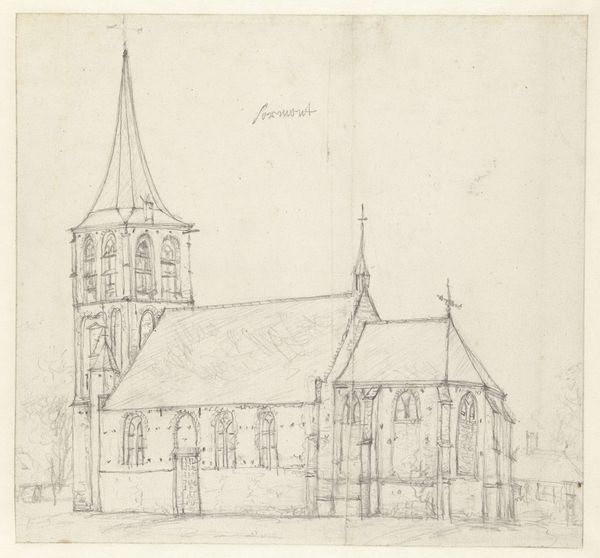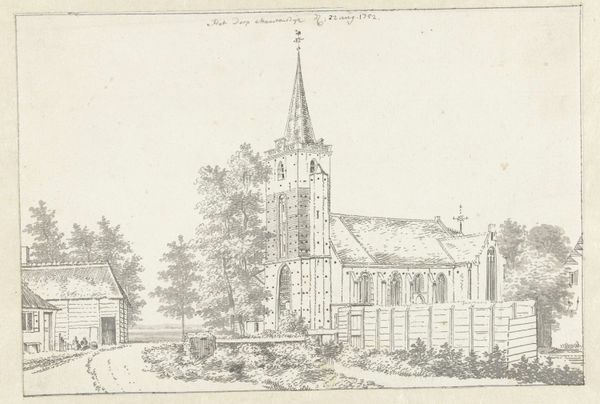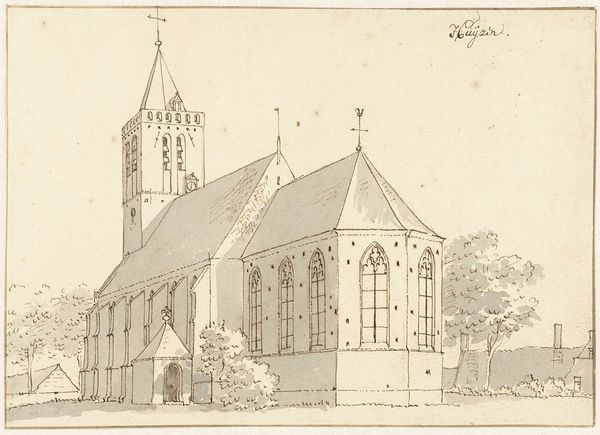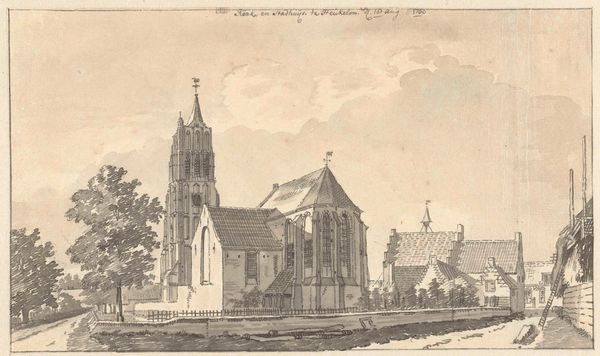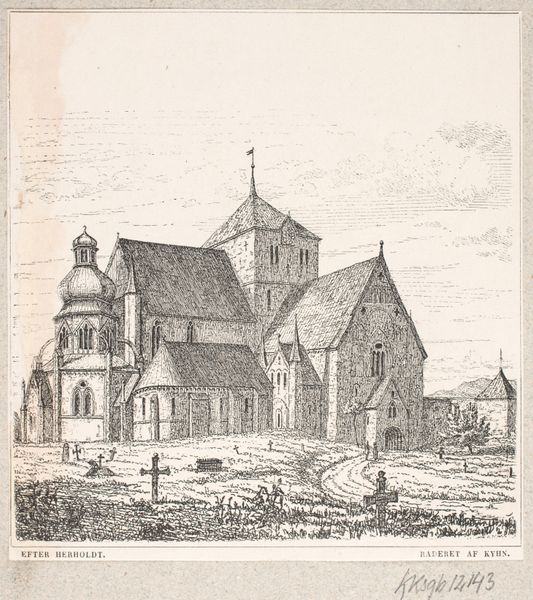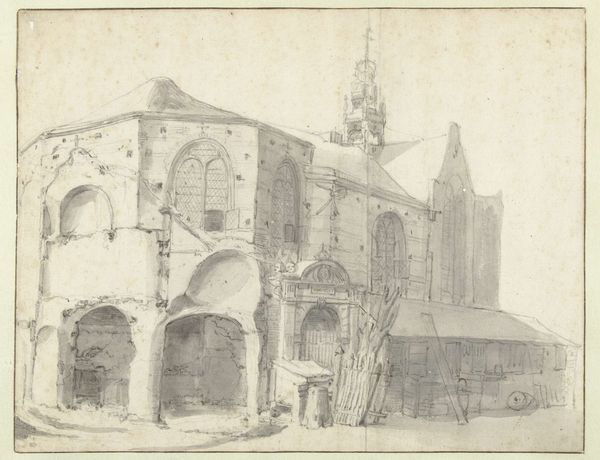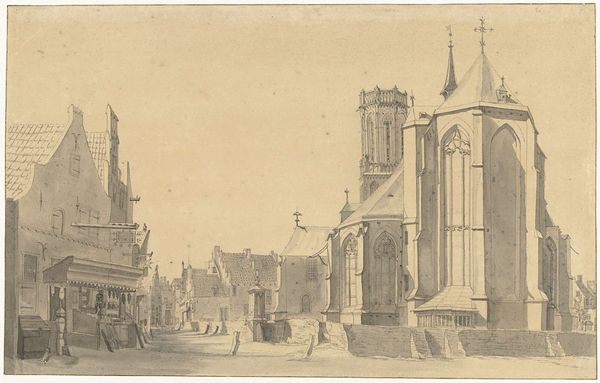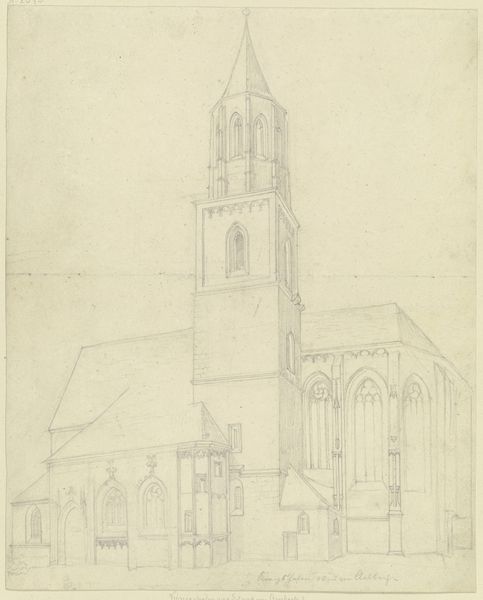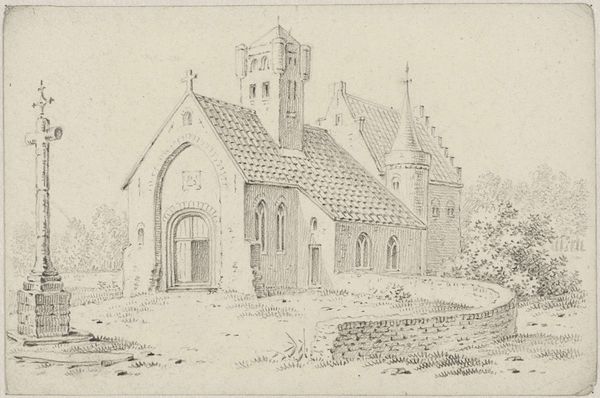
drawing, pencil, architecture
#
drawing
#
dutch-golden-age
#
pencil sketch
#
pencil
#
line
#
architecture drawing
#
cityscape
#
architecture
#
realism
Dimensions: height 274 mm, width 370 mm
Copyright: Rijks Museum: Open Domain
Editor: This is a pencil drawing from the 17th century, titled "Roman Church, Seen from the Northwest" by Jan Abrahamsz. Beerstraten. It's quite detailed, considering the medium. I’m curious about how this architectural study reflects its time. What can we read from this rendering of the church? Curator: This drawing provides valuable insights into the social and institutional role of religious architecture during the Dutch Golden Age. Churches held significant sway, serving as not just places of worship, but also centers of community life and even markers of civic identity. Notice the precise detail in the depiction of the structure itself and less in the world around it; what might that tell us about the intention of the artist, and potentially about the social function of the church in Dutch society at the time? Editor: That's interesting. It does seem that the architectural integrity is highlighted over all else, implying a social prioritization of the institution as much as its beauty or sacredness. Does the medium– a simple drawing instead of, say, a grand oil painting–affect how we view its social importance? Curator: Absolutely. Drawings, often preliminary studies, grant us access to the artistic process and demonstrate how artists engaged with the spaces that shaped Dutch culture. It invites us to consider the interplay between artistic representation, civic identity, and religious authority, especially during this period of social change and relative tolerance in the Netherlands. Perhaps this simple medium suggests a broader availability of religious expression for more people. Editor: So, it’s not just a church drawing, but a window into 17th century Dutch society and how its power structures influenced art production? Curator: Precisely. It reflects the public role of religious imagery and architecture within a specific cultural and political context, a testament to both the social importance of the church, and to the ways artists captured and disseminated these societal values. Editor: That gives me a lot to think about, I appreciate the context. Curator: My pleasure, I think there's lots more to explore when thinking of images in this period as active and involved participants in the politics of society.
Comments
No comments
Be the first to comment and join the conversation on the ultimate creative platform.



